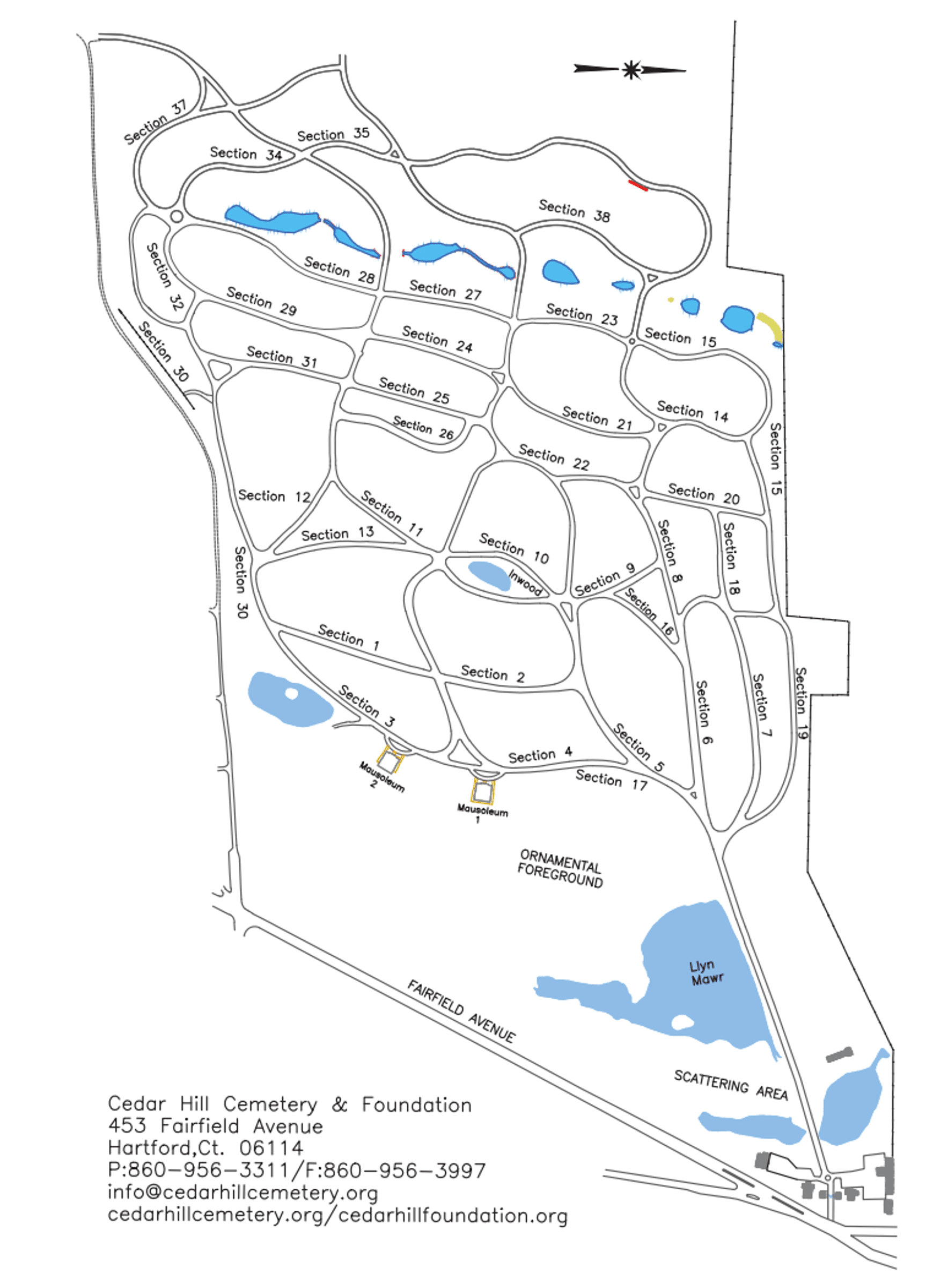Wallace Stevens
Birth Name:
Wallace Stevens
Birth Date:
October 2, 1879
Birth Place:
Reading, Pennsylvania
Death Date:
August 2, 1955
Place of Death:
St. Francis Hospital, Hartford, Connecticut
Age:
75
Cause of Death:
Stomach cancer
Cemetery Name:
Cedar Hill Cemetery
Claim to Fame:
Writers and Poets
Wallace Stevens (October 2, 1879 – August 2, 1955) was an American modernist poet. He was born in Reading, Pennsylvania, educated at Harvard and then New York Law School, and spent most of his life working as an executive for an insurance company in Hartford, Connecticut. He won the Pulitzer Prize for Poetry for his Collected Poems in 1955. Stevens's best-known poems include "The Auroras of Autumn", "Anecdote of the Jar", "Disillusionment of Ten O'Clock", "The Emperor of Ice-Cream", "The Idea of Order at Key West", "Sunday Morning", "The Snow Man", and "Thirteen Ways of Looking at a Blackbird". Though now considered one of the major American poets of the twentieth century, Stevens did not receive widespread recognition until the publication of The Collected Poems of Wallace Stevens (Knopf, 1954), just a year before his death. His other major works include The Necessary Angel (Alfred A. Knopf, 1951), a collection of essays on poetry; Notes Towards a Supreme Fiction (The Cummington Press, 1942); The Man With the Blue Guitar (Alfred A. Knopf, 1937); and Ideas of Order (The Alcestis Press, 1935). His published book The Collected Poems of Wallace Stevens (1954) earned him the Pulitzer Prize for Poetry.
Fun Fact
Stevens never learned to drive and would walk to work from his home on Westerly Terrace. He would compose poetry along the way, writing on slips of paper which his secretary would type up.
Cemetery Information:
Final Resting Place:
Cedar Hill Cemetery
453 Fairfield Avenue
Hartford, Connecticut, 06114
USA
North America
Map:

Cedar Hill Cemetery in Hartford, Connecticut
Grave Location:
Section 14, Lot 64, Grave 1Grave Location Description
As you enter the cemetery drive straight past the lake on your left and continue to the first intersection. Turn hard right and stay to the right for three whole sections on your left. Turn left at the intersection with Section 14 on your right. Drive forward to the intersection of Sections 14, 20 and 21 and park. With Section 14 on your right walk 5 rows into Section 14 for the final resting place of poet Wallace Stevens.
Grave Location GPS
41.7240244,-72.7027795Photos:
[+]
[+]
[+]
[+]
[+]
[+]
[+]
[+]
[+]
[+]
[+]
[+]
[+]
[+]
FAQ's
Wallace Stevens was born on October 2, 1879.
Wallace Stevens was born in Reading, Pennsylvania.
Wallace Stevens died on August 2, 1955.
Wallace Stevens died in St. Francis Hospital, Hartford, Connecticut.
Wallace Stevens was 75.
The cause of death was Stomach cancer.
Wallace Stevens's grave is in Cedar Hill Cemetery
Read More About Wallace Stevens:
- Published Obituary
- Wikipedia Entry
- Poetry Foundation - Wallace Stevens
- About Wallace Stevens | Academy of American Poets
- The trouble with Robert Frost & Wallace Stevens
- Insurance Man: The life and art of Wallace Stevens.
- Wallace Stevens Poems
- "Hoobla-Hoobla-Hoobla-How" - Sound and Meaning in the Poetry of Wallace Stevens
- A Poet's Escape: The Key West Idyll (and Turmoil) of Wallace Stevens
Videos Featuring Wallace Stevens:
See More:
Back to Top





